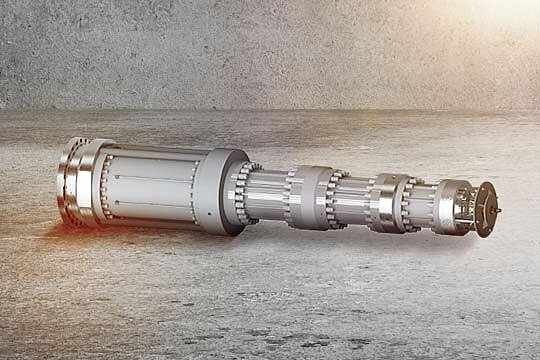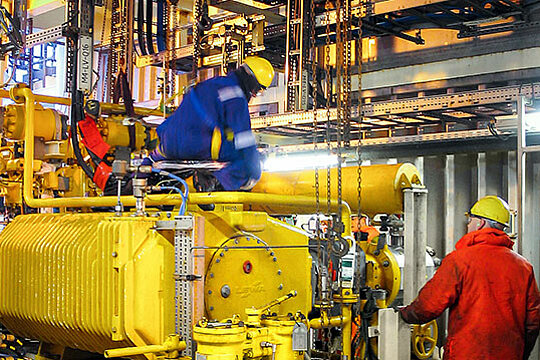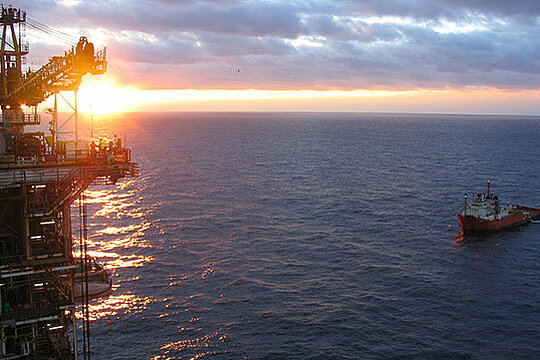Diaphragm pumps in oil and gas industry
Most applications in oil and gas industry run with diaphragm pumps. Their characteristics make them more suitable for the special requirements in this area than most other pump types. This whitepaper refers to several applications and devices in the oil and gas industry that are run with diaphragm pumps such as chemical injection packages.
Pulsation studies: Unsteady Friction Models in 1-dim CFD
The pump piping system has to be designed carefully if positive reciprocating displacement pumps with high hydraulic power are installed. Improper layout can lead to abnormal high-pressure pulsation, cavitation and fatigue failure of pump, piping or components. In this whitepaper, Dipl.-Phys. Marco Klinkigt (LEWA) explains the advantages of LEWA developed 1-dim CFD software. The software tools give us the opportunity to design an efficient pump-piping and dampener device layout for economic and reliable operation.
Life in Balance – Design and service requirements for pumps operating in a liquefied hydrocarbon environment
The service life of rotating equipment is dependent upon the successful operation of their rolling element bearings. For successful operation, a bearing should be installed properly, provided with a contamination-free environment, and sufficiently lubricated or cooled. Submerged electric motor pumps (SEMP), operating at a cryogenic temperature in a liquid hydrocarbon environment, provide a rolling element bearing design application that meets these criteria.
Speed Control – High speed designs and variable speed control advantages of cryogenic submerged motor pumps
In designing a pumping system, controllability using variable speed to adjust pump operation can help in achieving energy savings. Increasing rotational speed above normal line frequencies and using higher speed motors lead to more compact, lighter pumps. These smaller units result in smaller components as well as lower installation and maintenance costs. Using variable speed with centrifugal pumps is nothing new, but with submerged motor cryogenic pumps, it is now becoming more widespread due to the need to reduce costs.
Seal-less zero emission LNG pump solutions – How small scale LNG industry can benefit from the unique properties of submerged motor pumps
Submerged motor pumps (SMPs) are designed versatilely: The same basic pump configuration, with all of its features and benefits, can be adapted in a variety of ways to meet various process, transport, transfer and storage applications in various static or dynamic installations. Benefits include zero emissions, high safety and the availability of high speed designs and variable speed control.
Safety Matters – How to implement a safety and environmental management system to reduce risks in cryogenic pump testing
LNG facilities are built with state-of-the-art equipment and safety controls. The industry’s highest priority has always been safety and security, which is reflected in its impressive safety record. NIKKISO Cryo’s cryogenic pump testing facility is utilized to provide performance and mechanical tests for submerged motor cryogenic pumps for engineering purposes for development, engineering tests for production and Factory Acceptance Tests (FAT) for customers. Furthermore, NIKKISO Cryo uses an integrated management system to improve quality, safety and environmental performance in a process and systems approach.
FLNG Rock and Roll – Technical advances for LNG pumps aboard FSRUS
Lower capital costs, shorter on-stream time, lower coastal environment impact and flexibility – these are some reasons that led to the development of the floating storage and regasification unit (FSRU). NIKKISO Cryo is dedicated to the LNG industry and has heavily invested in technologies to advance FLNG including FSRU, FPSO and SRV operations. The company's packages include the full range of in-tank, send out and line packing pumps proven in the field. Original technologies addressing the specificity of operation during ship motion have been developed, patented and successfully validated.
Pump Synchronization - Harmonization of osciliating pumps
LEWA pump synchronization is a technology that harmonizes oscillating pumps feeding the same piping system. This does more than just reduce pressure pulsation and vibrations in the piping. Synchronized operation of multiple pumps also makes it possible to add and remove individual pumps without changing the overall flow rate. As a result, various application scenarios are possible, such as flexible load distribution across multiple pumps or maintenance during ongoing operation.
More Energy efficiency for industrial pumps - Comparison and advantages
Industrial pump manufacturers are supposed to increase the energy efficiency of their technology by about 2.1 percent as well as substantially reduce the environmental impact—for example, caused by CO₂ emissions. In order to achieve this, it is advisable to consider a system comprehensively and compare the individual parameters of the respective pump type before deciding on a pump solution.










